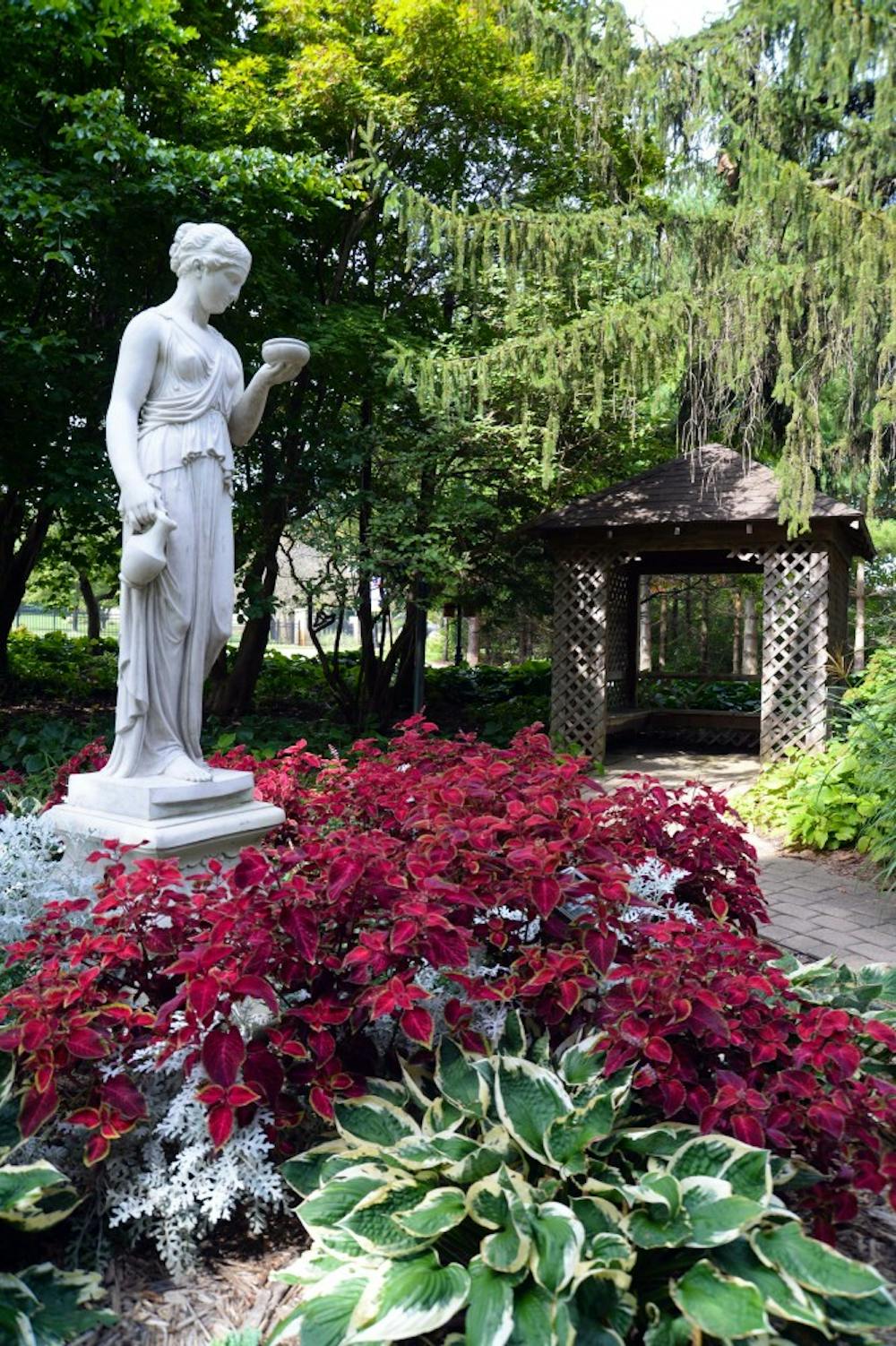Upon entering Krider Nurseries, World’s Fair Garden or Krider Garden, visitors can have their own personal guide as they explore the pathways. All they need is a mobile phone capable of accessing the Internet.
Ball State students and Krider Garden collaborated to create a mobile tour of the garden, available at on the garden’s website.
On the website, there is a map, where there are 12 red pins you can click on to view or listen to the garden’s history and interesting facts. Another product of the project is the guide book, “A Walk in the Garden: A Guide to Krider World’s Fair Garden and its History,” now available on Amazon.
Located in Middlebury, Indiana, Krider Garden is one of the earliest botanical parks in Indiana. It was designed and built by the Krider Nurseries for the 1933 to 1934 Chicago World’s Fair. The Krider family donated the 2.4 acre park to the town in 1993.
Now, the garden hosts an array of plants, shrubs and trees, with various structures such as a fountain, reflecting pool and sculptures.
Professor Ronald Morris at Ball State Department of History brought this one-semester project to his History Practicum class. Students worked not only on the mobile experience and book, but also marketing efforts such as flyers, business cards and press releases.
With the project now completed, Morris is ready for people to experience it.
“Hopefully people who are in the community are able to find out more about the history of the garden and understand how it connects to the history of the community and enjoy its natural beauty,” he said.
Zachary T. Sexton, who was the web developer for the project, thought it was a great experience to work for a client outside of Ball State.
“It was a lot of fun. I enjoy web development and working with clients,” he said. “Seeing them have a vision and then taking that vision and putting it into - tweaking it into a way that can be done - a website and a product that they can show off is always fun.”
Jenny Alvaro was the graphic designer for the book on the project. For her, the experience slightly differed from what she is used to.
“It was a very different experience because I’ve never worked in an area that is history-based. I’ve always been [working with] stories and not like trails or guiding people through,” she said.
However, she enjoyed having the freedom to experiment in her work.
“It was nice to have that kind of independence that I don’t normally have when I’m in other projects,” she said.
The book goes in-depth on the 17 different landmarks on the trail, along with the short stories and history that bind the garden. Working on the 52-page book, Alvaro has learned a lot about communication.
“I learned more about working with people and working with third parties,” she said. “And communicating between a bunch of different people to make sure I get the best results.”
The garden is free to enter and enjoy. More information about the garden is also provided in the videos on the website.





